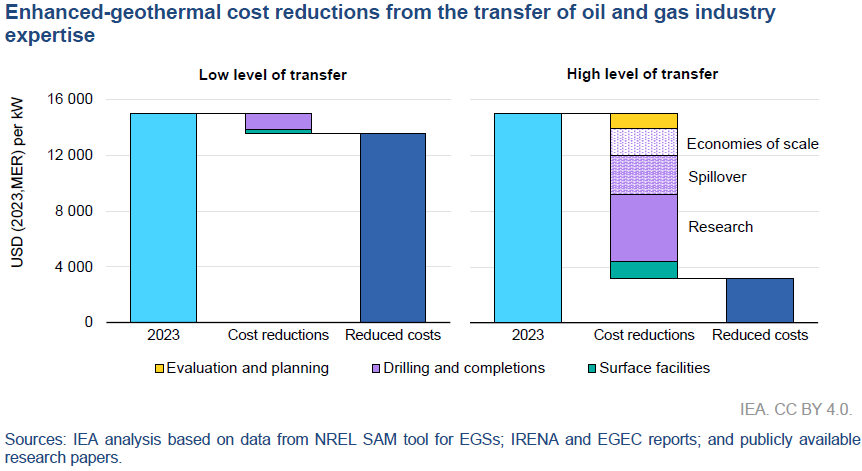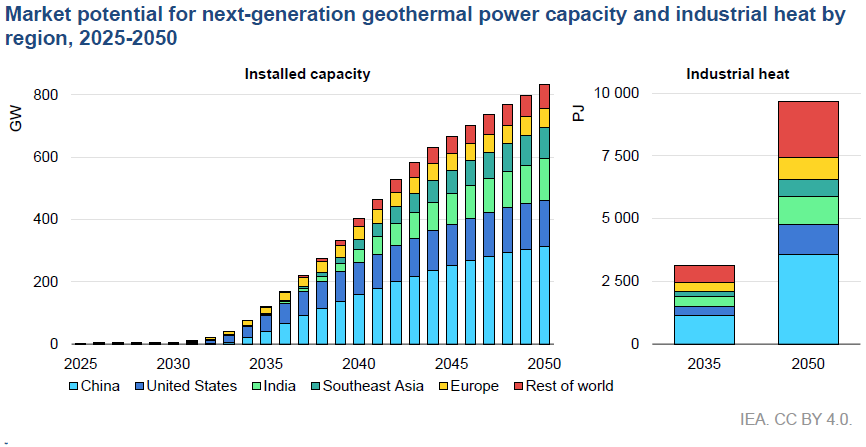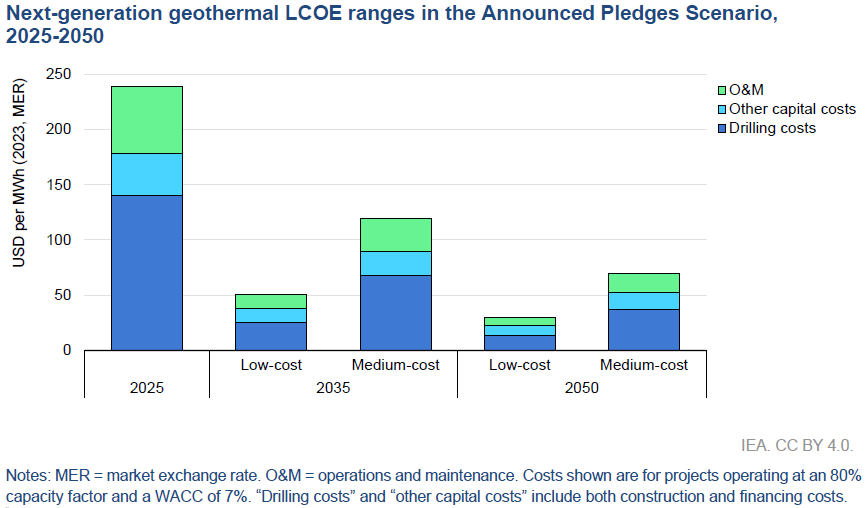𝙒𝙝𝙖𝙩 𝙘𝙖𝙪𝙜𝙝𝙩 𝙢𝙮 𝙖𝙩𝙩𝙚𝙣𝙩𝙞𝙤𝙣? 800 GW and $2.8T of potential next generation geothermal by 2050 in the IEA’s “The Future of Geothermal Energy” report.
𝙒𝙝𝙮 𝙞𝙩 𝙢𝙖𝙩𝙩𝙚𝙧𝙨? This outcome depends on cost reductions similar to what have been achieved by US shale for next generation geothermal techniques. While companies like Fervo are making progress in the US, replicating the learning curve in other parts of the world is far from certain.
What is missed is that the US shale experience was made possible by a rich oilfield services ecosystem, large scale capital investment (and corresponding financial markets) that enabled continuous activity and learning, pre-existing publicly available data, and a variety pre-existing infrastructure providing access to end markets.
The US does not have a monopoly on good rock (shale), but it may have a monopoly on the ecosystem that can drive down costs.
𝘿𝙚𝙩𝙖𝙞𝙡𝙨:
• The outlook incorporates major reductions in costs, largely driven by knowledge transfers from oil and gas. These reductions reduce LOCEs from ~$230/MWh for current first-of-a-kind projects, down to $50/MWh in 2035 and $30/MWh by 2050, and unlock geothermal resources in many regions of the world.
A few great graphics from the IEA:
𝙇𝙞𝙣𝙠𝙨:





